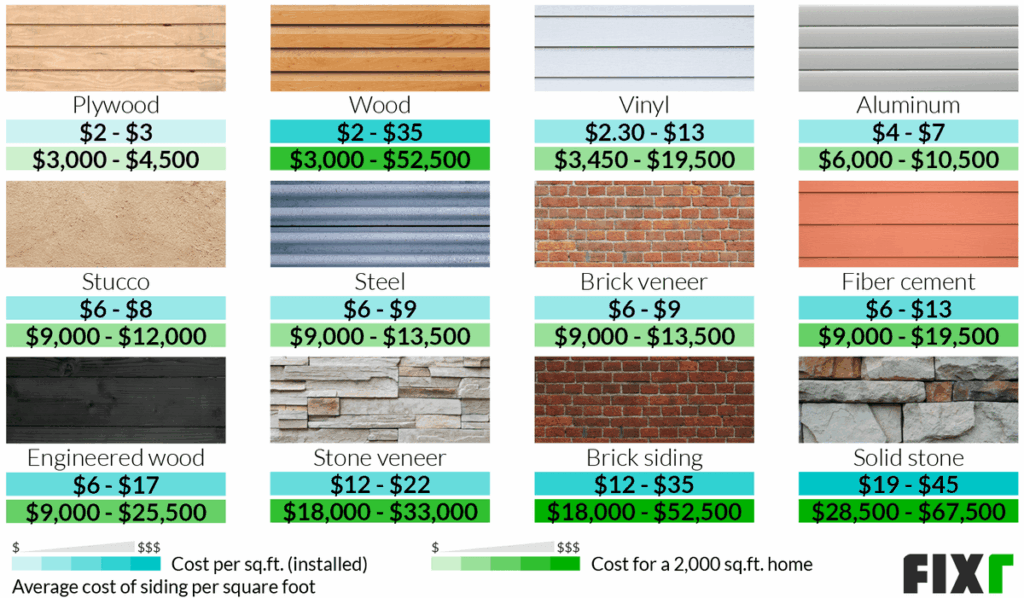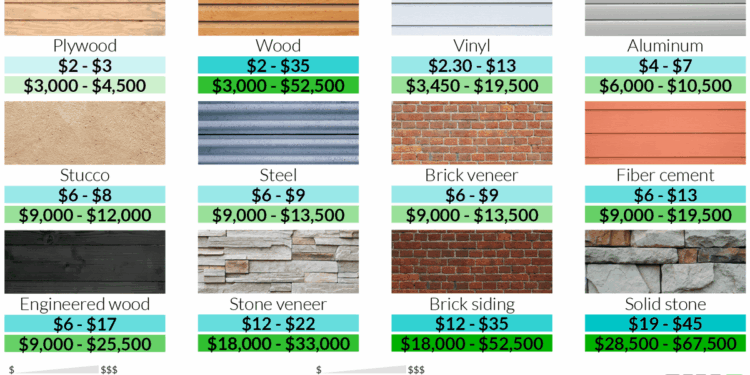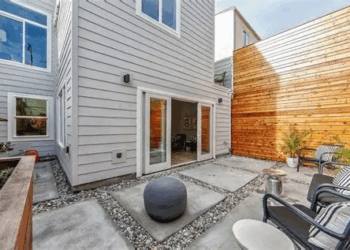
Delve into the realm of average cost to have siding installed as we unveil a comprehensive guide filled with valuable insights and practical advice. From exploring the various influencing factors to comparing different siding types, this article is your go-to resource for all things related to siding installation costs.
Discover the intricacies of pricing, materials, and additional costs as we navigate through the intricacies of this essential home improvement process.
Factors Affecting Cost
When it comes to the cost of siding installation, several factors come into play that can influence the overall pricing. Understanding these factors is essential to budgeting for your project effectively.
Materials Used
The type of material used for the siding can have a significant impact on the total cost of installation. For example, vinyl siding tends to be more affordable compared to options like wood or fiber cement. The quality and durability of the material can also affect pricing.
Size and Complexity of the Project
The size and complexity of the project play a crucial role in determining the cost of siding installation. Larger homes will require more materials and labor, resulting in higher overall costs. Additionally, if the project involves intricate designs or hard-to-reach areas, it may require more time and expertise, leading to increased pricing.
Types of Siding
When it comes to choosing siding for your home, there are several options available, each with its own set of pros and cons. The choice of siding material can significantly impact the overall cost of installation, so it’s essential to understand the differences between them.
Vinyl Siding
Vinyl siding is one of the most popular choices due to its affordability and low maintenance requirements. It comes in a variety of colors and styles, making it versatile for different home designs. However, it may not be as durable as other materials and can crack or fade over time.
Wood Siding
Wood siding offers a classic, natural look that many homeowners love. It is highly customizable and can add warmth and charm to a home. However, wood siding requires more maintenance, such as regular painting or staining, and is susceptible to rot, pests, and fire.
Fiber Cement Siding
Fiber cement siding is known for its durability and resistance to rot, fire, and pests. It can mimic the look of wood or stucco but requires less maintenance. While fiber cement siding is more expensive upfront, it can save money in the long run due to its longevity.
Other Options
Other siding options include metal, stucco, and brick, each with its own benefits and drawbacks. Metal siding is durable but may dent easily, while stucco provides a unique texture but can be prone to cracking. Brick siding is highly durable but comes at a higher cost.
Cost Comparison
When considering the average cost of installing different types of siding per square foot, it is essential to take into account various factors that can influence the overall expenses. These factors include labor costs, materials used, permits required, and any additional expenses that may arise during the installation process.
Vinyl Siding
Vinyl siding is one of the most affordable options when it comes to siding installation. On average, the cost of installing vinyl siding can range from $3 to $7 per square foot. This cost includes labor, materials, and other necessary expenses.
Keep in mind that the quality of the vinyl material and the expertise of the laborers can affect the final cost.
Wood Siding
Wood siding tends to be more expensive compared to vinyl siding, with an average cost ranging from $6 to $10 per square foot. The cost of wood siding installation can vary depending on the type of wood used, such as cedar or redwood, as well as the complexity of the installation process.
Higher quality wood materials and skilled labor can drive up the overall cost.
Fiber Cement Siding
Fiber cement siding falls somewhere in between vinyl and wood siding in terms of cost. The average cost of installing fiber cement siding can range from $5 to $12 per square foot. This type of siding is durable and low-maintenance, but the quality of the materials and the expertise of the installers can impact the final cost.
Cost Breakdown
- Labor: Labor costs typically account for a significant portion of the total expenses, ranging from 50% to 70% of the overall cost.
- Materials: The cost of materials, including the siding panels, insulation, and any additional supplies, can vary based on the type and quality of materials chosen.
- Permits: Permit costs are often required for siding installation projects and can add to the overall expenses.
- Other Expenses: Additional expenses such as disposal fees, cleanup costs, and any unforeseen repairs can also contribute to the total cost.
It is important to invest in high-quality materials and experienced labor to ensure a durable and visually appealing siding installation. Cutting costs on materials or labor may result in subpar results and potentially higher expenses in the long run.
Additional Costs
When budgeting for siding installation, it’s crucial to consider the various additional costs that may arise throughout the process. These costs can significantly impact the overall expenses and catch homeowners off guard if not properly accounted for.
Insulation
Insulation is a crucial component of siding installation as it helps improve energy efficiency and protect your home from external elements. The cost of insulation can vary depending on the type and quality you choose, but it’s an essential investment to consider for long-term savings on energy bills.
Trim Work
Trim work adds a finishing touch to your siding and enhances the overall aesthetic appeal of your home. The cost of trim work can vary based on the material, complexity of design, and the amount needed. It’s important to budget for trim work to ensure a polished look for your siding.
Removal of Old Siding
Before installing new siding, the old siding must be removed, which can incur additional costs. The cost of removing old siding depends on the type of material, extent of damage, and labor involved. It’s essential to factor in this cost to avoid surprises during the installation process.
Unexpected Costs
There are several unexpected costs that homeowners should be aware of when planning for siding installation. These may include structural repairs, additional materials due to unforeseen circumstances, or permit fees required by local authorities. It’s advisable to set aside a contingency fund to cover any unexpected costs that may arise during the installation process.
Closing Notes
In conclusion, understanding the average cost to have siding installed is key to making informed decisions for your home renovation projects. Armed with the knowledge gained from this guide, you can confidently navigate the complexities of siding installation costs and embark on your next home improvement venture with clarity and certainty.
Expert Answers
What factors can influence the cost of siding installation?
Factors such as material choice, project size, and complexity can all play a significant role in determining the overall cost of siding installation.
What are the common additional costs associated with siding installation?
Common additional costs may include insulation expenses, trim work, and the removal of old siding. These factors can add to the total cost of the project.
How does the quality of materials and labor affect the overall cost?
Using high-quality materials and skilled labor can increase the overall cost of siding installation. However, investing in quality often leads to better long-term results and durability.
Are there any unexpected costs homeowners should be aware of?
Homeowners should be prepared for unexpected costs such as structural repairs, permit fees, or changes in project scope that can impact the final cost of siding installation.














